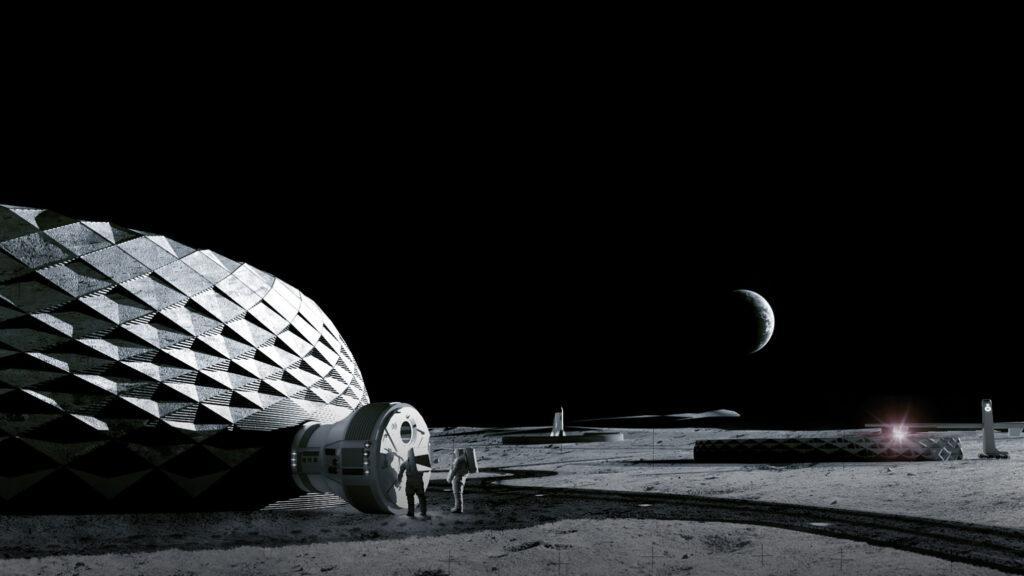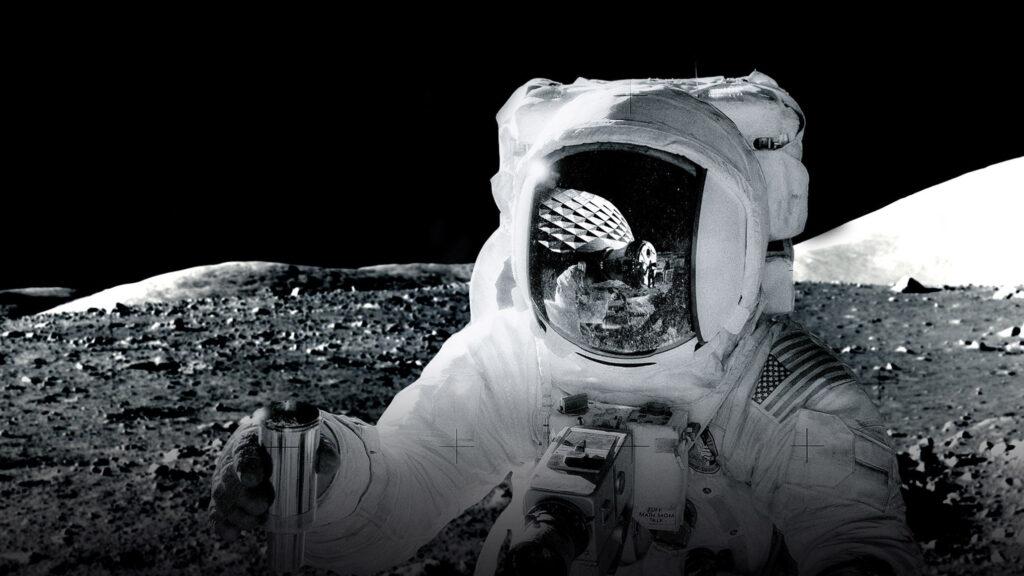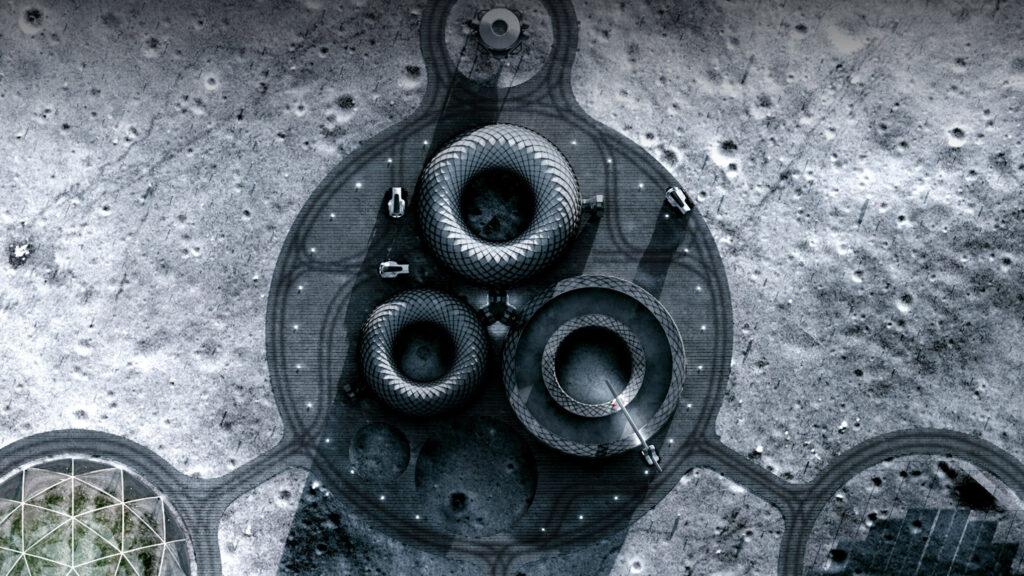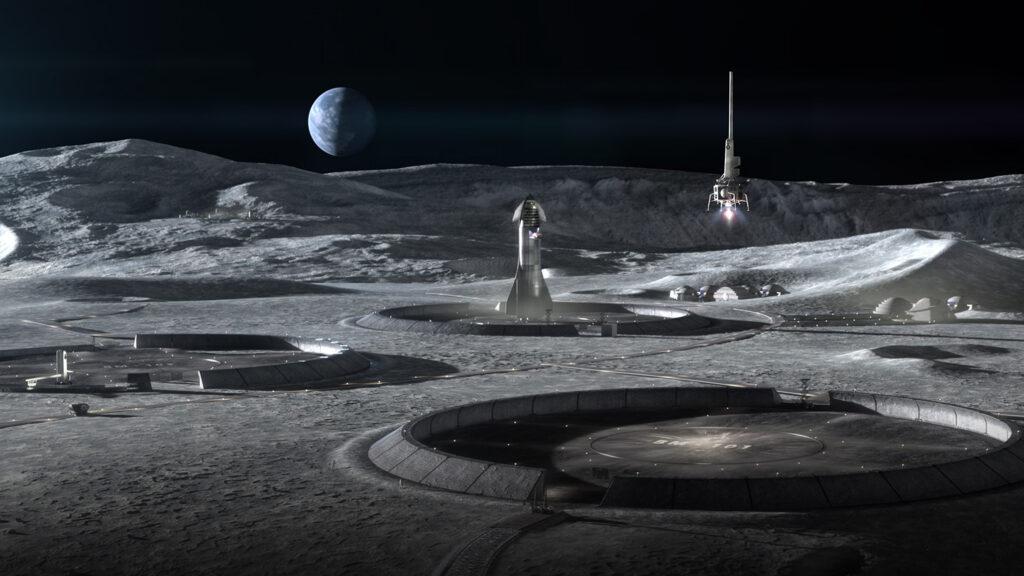Construction on the moon!
The most ambitious building project in human history has been launched. Architecture office BIG, construction company ICON and NASA plan to build the first settlement on the moon using 3D printing technologies. The name of their mission: Project Olympus.
Were it not for the international renown of the companies involved in this recently launched enterprise, we might be inclined to classify the project as science fiction. Then swiftly dismiss the idea without giving it a second thought. However, Project Olympus is actually being developed by three truly illustrious players. And they are making it crystal clear that this is certainly not fiction!
What’s Project Olympus anyway?
But what is the project all about? Well, architecture studio BIG (Bjarke Ingels Group), which has become internationally omnipresent over the last few years, along with construction firm ICON – the global leader in its sector when it comes to 3D printing – and NASA have presented plans for the first ever settlement on the moon.
These plans are named Project Olympus, whose aim is to construct the first buildings on our Earth’s moon in the relatively near future. The official documents specify that the goal of this extraterrestrial mission is to develop the possibility for creating infrastructure for life on the moon. Similar scenarios have already been developed time and again by a number of different companies. Any real potential for realization has been lacking, though. This time, in light of who is involved, things look quite different.
An entirely new approach
The approach taken by Project Olympus also differs significantly from previous ideas. While others had previously suggested the use of inflatable tent components or elaborate metal structures, Project Olympus will introduce entirely new technologies in order to meet the challenge. The project team, which has already started work on the endeavour, is convinced that robust constructions on the moon’s surface can be created using 3D printing technology.
There is a trick to this: none of the material needed for this enormous “house printing” venture would have to be transported to the moon. Rather, the goal is to source building materials from substances already existent on the moon itself. The overall costs would be reduced considerably by this approach. The team is also confident that any potential pollution of the moon’s surface can largely be prevented this way.
Simulating Project Olympus on Earth
BIG founder Bjarke Ingels comments: “With ICON we are pioneering new frontiers – both materially, technologically and environmentally.” Collaborating with NASA’s Marshall Space Flight Center, based in Huntsville, Alabama, the team will now use a simulation of the moon’s surface on Earth to create an initial 3D printable construction.
Optimized for conditions in space
With this in mind, certain possibilities have already been examined using computer models. Ingels reports: “We have explored various building forms ideal for containing atmospheric pressure and optimized for protection from cosmic and solar radiation.”
With ICON we are pioneering new frontiers – both materially, technologically and environmentally.
In any case, it is clear that all the key players in this spectacular project are driven by an ambition to ultimately make it happen that goes beyond an interest in technical progress. “Building humanity’s first home on another world will be the most ambitious construction project in human history and will push science, engineering, technology, and architecture to literal new heights,” ICON co-founder Jason Ballard explains.
Benefitting construction on Earth
BIG partner Martin Voelkle is convinced that the developments accomplished through Project Olympus will be valuable on Earth and not just on the moon. “With the technologies and efficiency parameters developed for the construction of extraterrestrial buildings, Project Olympus will also help us to build sustainably on planet Earth as we strive to reduce the carbon footprint of the built environment,” Voelkle says.
And should anyone still have doubts about the seriousness of this endeavour: the project is part of NASA’s commitment to exploring life on the moon. These activities also include the Artemis programme, which aims to send the first woman and the next man to the moon in 2024. At the beginning of this year, NASA named further partners who are to join BIG and ICON in realizing this project: Jeff Bezos’s Blue Origin and Elon Musk’s SpaceX.
Truly out of this world!
Text: Johannes Stühlinger
Translation: Rosemary Bridger-Lippe
Images: BIG, ICON, NASA



